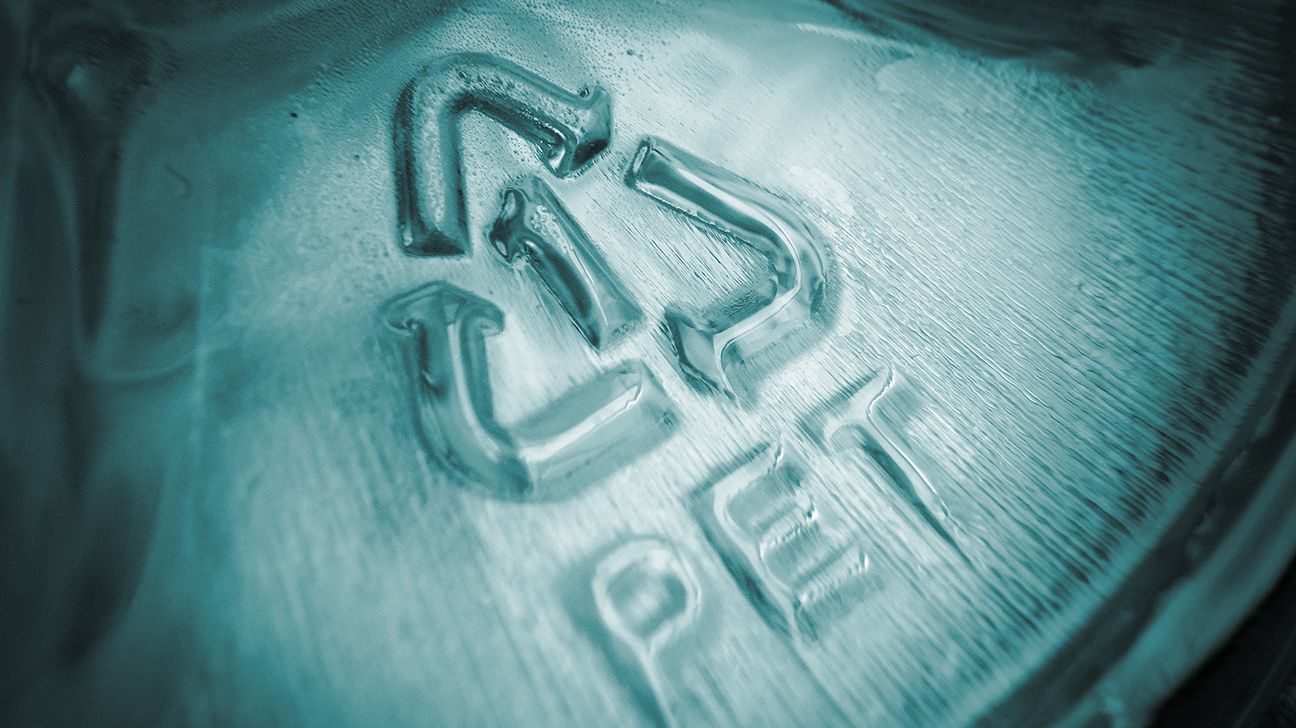While it’s generally OK to store food in plastic containers labeled with a 1, 2, 4, or 5, you should try to use glass. Plastic marked with a 3, 6, and 7 should be used minimally around food to limit potential health impacts.

Look closely at plastic products, such as water bottles, takeout containers, and food trays, and you’ll see numbers within a small triangle ranging from one to seven.
These numbers are anything but random. The number itself denotes what type of plastic the container is made from, and if it’s recyclable.
Certain numbers have also been linked to health issues.
The table below summarizes the seven most common groups of plastics and their household uses. For comprehensive recycling information, check locally.
| Number | Type of plastic | Used for | Is it recyclable? |
|---|---|---|---|
| 1 | polyethylene terephthalate (PET) | • some food containers • bottled drinks | generally yes |
| 2 | high density polyethylene (HDPE) | • milk and juice jugs • shampoo bottles • dish soap and laundry detergent containers • some plastic bags | generally yes |
| 3 | polyvinyl chloride (PVC) | • some food containers • cling wrap • vinyl flooring, piping, and roofing • shower curtains | check locally |
| 4 | low density polyethylene (LDPE) | • shopping, grocery, and garbage bags • food wrapping, such as for bread and frozen goods | generally no |
| 5 | polypropylene (PP) | • dairy product containers • medicine bottles • food containers • bottle caps | check locally |
| 6 | polystyrene (PS) | • disposable cutlery • styrofoam • food and takeout containers • egg cartons • home insulation | generally no |
| 7 | mixed (other) | • lids • electronics • some baby bottles • water bottles | generally no |
Though many of the plastics in the table above may be used to store or hold food and drink, it’s not always safe to heat or reuse them.
As a general rule of thumb, you should try to avoid cooking, heating, and reheating food in plastic — even if it is “microwave safe.”
Glass is a better option for reheating and storage, while cast iron, stainless steel, and ceramic are better for cooking.
The table below summarizes when and if it’s safe to use plastic around food:
| Number | Safe to use for food storage? |
|---|---|
| 1 | yes, but don’t reuse |
| 2 | ✓ |
| 3 | try to minimize use around food |
| 4 | ✓ |
| 5 | ✓ |
| 6 | try to minimize use and reuse around food |
| 7 | try to avoid using non-polylactic acid (PLA) No. 7 plastics around food |
Plastics No. 1, 2, 4, and 5 have no known health issues, according to Sea Studios Foundation. In fact, these are the only plastic containers considered generally safe for food storage.
But you should still try to avoid the frequent use of plastic around food.
When possible, try to replace plastic with glass to help minimize your exposure to potentially harmful chemicals and environmental contamination.
No. 3 plastics (PVC)
The manufacturing, disposal, and destruction of No. 3 plastics create harmful byproducts, such as:
- lead
- di(2-ethylhexyl)adipate (DEHA)
- dioxins
- ethylene chloride
- vinyl chloride
Exposure to harmful amounts of these byproducts may cause:
- decreased birth weight
- learning and behavioral problems in children
- suppressed immune function
- hormone disruption
- cancer
- birth defects
- genetic changes
No. 6 plastics (PS)
Styrene is a chemical that can leach from polystyrene. Long term exposure to harmful amounts of styrene may affect:
No. 7 plastics (mixed)
Because No. 7 plastics cover a wide range, the health effects depend on the chemical makeup of a product.
Bisphenol A (BPA) is included in this category. According to a 2023 mouse study, it is a potential endocrine disruptor with
If you store or prepare food in or around plastic, you should use those labeled with a 1, 2, 4, or 5 over those labeled with a 3, 6, or 7. But try to use plastic around food minimally.
High or frequent exposure of food to any plastic may be linked to health problems.
As a general rule of thumb, you should not heat food in plastic and aim to replace all plastic items in the kitchen, such as storage containers, cups, and plates, with glass to minimize your exposure and potential health risks.






